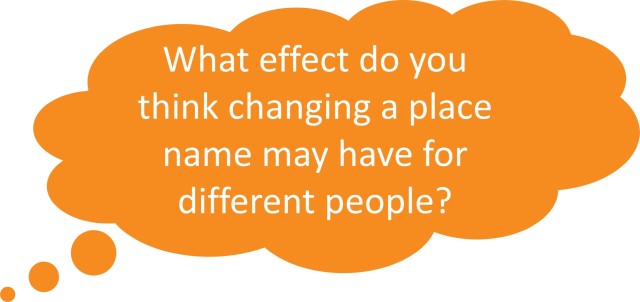You can contact LEARNZ, part of CORE Education, at:
Postal Address:
PO Box 13 678,
Christchurch 8141,
New Zealand
New Zealand’s non-Māori place names tell the story of the country’s European habitation. As Europeans surveyed, acquired and changed New Zealand’s landscape they replaced older Māori names. They named places such as towns after historical events and famous people or places they had come from. Since many Pākehā New Zealanders came from the United Kingdom, they used place names to create a sense of home and proclaim their membership of the British Empire. These people also gave names to features in the landscape and to districts, towns and streets.

Most European names came during the colonising era between the 1840s and 1910s. This was a period when people from Europe came to New Zealand to work and live and to purchase land and profit from it. It was also a time when the newly arrived European culture made its mark on a changing landscape by naming places.
During this time, people involved in colonisation often named places. Surveyors in particular, the ones who worked for colonising associations, were responsible for many European place names as they went about establishing and mapping suitable places for European immigrants to settle. Some of these names acknowledged the colonising association sponsors for example Hutt Valley, Wakefield, Port Chalmers and Ashburton.

Settlers from the United Kingdom used only some names from places they came from, for example New Plymouth for Plymouth in England. Dunedin is named after the Scottish Gaelic for Edinburgh. Birkenhead, Devonport, Westport, Belfast, New Brighton and Roxburgh are other names taken directly from United Kingdom place names. Canterbury was applied as the name of a province not a town, while Christchurch takes its name from a college at Oxford University, not from the town in southern England. Oxford and Cambridge (another university in England) were also used.
Dannevirke and Norsewood honour the homelands of the early Scandinavian immigrants.
Some early immigrant ships gave their names to streets and settlements. The area of Bombay takes its name from the ship Bombay. The Cuba, Oriental and Tory became Wellington and Petone street names and the Cressy, Randolph, Charlotte Jane and George Seymour gave their names to streets in Lyttleton.
The names of early Europeans name many inland locations, including Helensville, Dargaville, Morrinsville, Bulls, Masterton and Levin.

There are places named after government officials (Featherston, Rolleston, Invercargill), politicians (Foxton, Fox Glacier, Gisborne) and church leaders (Selwyn). Military heroes and famous battles were popular place names, with Auckland, Napier, Hastings, Havelock, Wellington, Picton, Marlborough, Nelson and Blenheim.
British politicians and royalty lent their names to Russell, Palmerston, Cromwell, Queenstown and Alexandra, while Franz Josef is named after the Austrian emperor. Royal names are more popular for streets than towns or geographic features, although both Auckland and Wellington have Mount Victoria. Gore is named after Governor Thomas Gore Browne and George Grey's name is used for Greytown, Greymouth, Grey Lynn and many natural features.
King Country tells of the region where the Māori king defied the colonial government for many years.

Physical features had descriptive names such as Stony River, Two Thumb Range, Rock Range and Pillar Range, Old Man Range, Raggedy Range and The Remarkables.
They also identify several settlements, for example Riverhead, Gumtown (later Coroglen, after a racehorse), Woodville, Island Bay, Redcliffs, Windwhistle, Riverton / Aparima and Bluff.
Some region names are descriptive – Northland, Southland and Fiordland for example. Westland is more often called the West Coast, and locals are Westcoasters, not Westlanders. The name Eastland is only used in tourist information – New Zealanders call it the East Coast.

Britain’s poets are represented by Spenser Mountains, Tennyson Inlet and Lake Tennyson, Chaucer Bay and Milton Bay. Napier named its streets after literary figures and Shakespeare was an early name for the Avon River in Christchurch. Waverley was the name of Sir Walter Scott’s first historical novel.
Mountains, passes and rivers were often named after European explorers, including Buller River, Lewis Pass, Haast Pass / Tioripatea and Heaphy River. James Cook often named places after scientists. Julius von Haast in particular followed suit, as in Mount Davy, Hooker Range, Mount Humboldt, Lyell Peak and Newton Peak, all mountains in the Southern Alps Kā Tiritiri of te Moana.


Try the How European New Zealanders named places quiz.